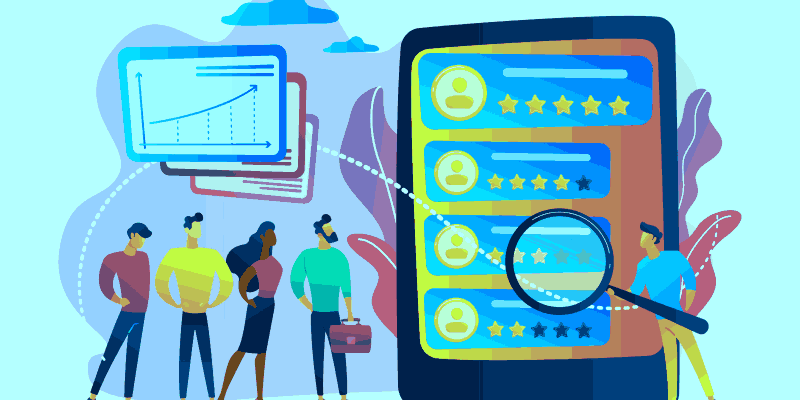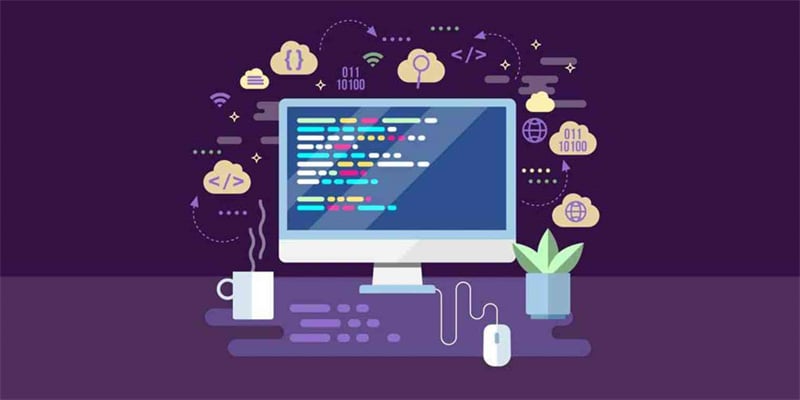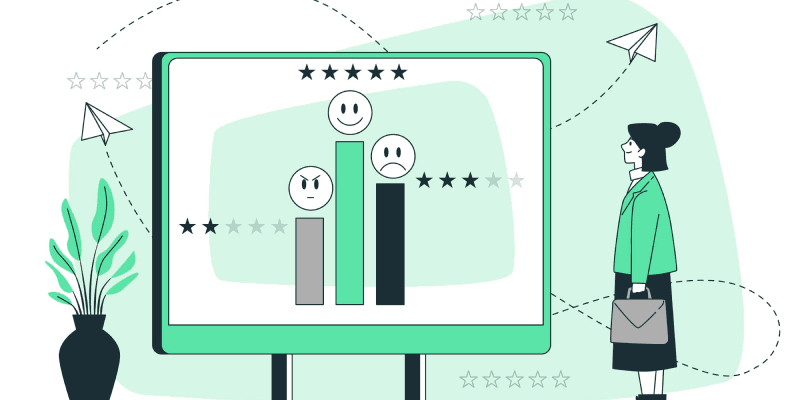Customer Segmentation vs. Market Segmentation

Segmentation strategies play a crucial role in understanding and targeting audiences in any SaaS business.
In the myriad of segmentation approaches, two methods stand out as the most efficient: customer segmentation and market segmentation. Although often used interchangeably, the given strategies have different purposes and methodologies, but they can both significantly impact a company’s growth and customer engagement.
In the following article, we will cover the nuances and differences between customer segmentation and marketing segmentation and point out how both strategies can benefit your SaaS business. Keep on reading!
What is Customer Segmentation?
Customer segmentation is the process of dividing your customer base into different groups (segments) based on their behaviours, preferences, or needs. You can segment customers according to age, location, interests, values, frequency of usage, features used, etc.
The purpose of customer segmentation is to better understand your customer base so you can provide a personalized experience for each group.
What is Market Segmentation?
Market segmentation is the process of dividing a market into smaller segments or groups based on similar characteristics. It involves analyzing factors like geographical locations, company size, usage behaviors, psychographic characteristics, purchasing power, and others. When a company manages to understand the given segments, it gets easier to create pricing models, product features, marketing campaigns, and customer support. This is how all the unique needs and preferences can be adequately addressed.

Benefits of Customer Segmentation
To be able to understand the difference between market segments and customer classification (segmentation), we first need to give you a precise definition of customer segmentation. Customer segmentation involves dividing the potential customers or existing user base into distinct cohorts based on shared traits or behaviors. The key role of customer segmentation is to help you understand customers on a much deeper level and adapt strategies to their specific preferences.
Let’s see the crucial benefits of customer segmentation for SaaS businesses:
- Personalized User Experience
- With customer segmentation, you can deliver tailored experiences and product recommendations, which can significantly enhance user satisfaction and loyalty. With customer success platforms like Akita, you can centralize all your customer data from various sources, analyze customer behavior to create segments, and create and monitor health scores to prioritize customer segments for tailored interventions or engagement. You can send personalized messages to specific customer segments and get regular reports and visual metrics about customer behavior and trends.
- Product Development
- When performed properly, customer segmentation can provide valuable insight into diverse user requirements. Based on these insights, you can prioritize certain features and updates that fit the needs of specific segments. This customization of the products can enhance their competitiveness and value proposition.
- Targeted Marketing Campaigns
- Customer segmentation can help you create targeted marketing campaigns. This is the best way to reach the right audience at the right time with the right message.
- Optimized Pricing Strategies
- After segmenting your customers, you can identify those willing to pay more for exclusive services or features. This is how you can create various tiered pricing models and different packages that align with the value perceptions of each customer segment.
- Customer Retention Improvement and Churn Reduction
- By addressing certain pain points and offering targeted support and solutions that match specific needs, there is a better chance to reduce churn rates and foster long-term customer relationships.
- Better Resource Allocation
- When focusing on segments that have higher value or higher potential for growth, you can optimize customer service, marketing, and sales efforts more efficiently.
- Decision-Making Based on Precise Data
- When utilizing the extensive data from customer segmentation analysis, you can make informed decisions about overall business direction, marketing, and retention strategies.
Benefits of Market Segmentation
Customer segments vs. market segments: there is a reason why there is a “vs” between these terms, as they represent two distinctive strategies with the common goal of helping SaaS businesses get an in-depth understanding of their market and customers. Besides the aforementioned benefits of customer segmentation that match with the ones for market segmentation, let’s see some advantages unique to market segmentation only:
- Customer Acquisition and Retention Enhancement
- Both customer and market segmentation can affect customer retention rates positively if done properly, but only market segmentation can improve customer acquisition. You can attract more qualified leads when targeting specific segments with customized solutions and marketing propositions. Also, answering the demands of specific segments contributes to higher customer satisfaction and retention.
- Competitive Advantage
- With market segmentation, you can differentiate your SaaS business by offering solutions tailored to each segment’s requirements. This is how you create a competitive edge by addressing market needs effectively.
- Stronger Brand Image
- After the market segment is identified, you can determine what message you wish to create and deliver. Since the given message is directed to a specific target audience, it means that your company’s branding will more likely be intentional.
- Better Digital Advertising
- Marketing segmentation allows you to create better-targeted advertising strategies by helping you deliver marketing plans for a group of people with a specific age, location, or habits on social media.
What Is the Difference Between Market Segments and Customer Classification?
To understand the difference between market segments and customer classification, we need to determine each strategy’s focus, purpose, and application.
Market segmentation focuses on dividing the broader market into distinct groups based on their shared traits, while customer classification categorizes individual customers into groups based on similar characteristics.
The purpose of market segmentation is to understand various groups within the market to tailor marketing strategies and business decisions, while customer classification aims to group customers to personalize interactions and improve customer experiences.
When it comes to their application, market segmentation involves categorizing the market into segments like enterprises, small businesses, certain industries, or locations. Customer classification segments users based on demographics, usage patterns, engagement levels, etc.
Now, let’s see how customer service segments differ from product market segments to give you a concrete example of two specific segments where the first one is related to customer segmentation and the second to market segmentation. In essence, customer service segments aim to optimize support experiences for different customer groups, while product market segments help tailor product-related strategies to diverse market segments based on their needs related to the service or products being offered.
Customer Segmentation vs. Market Segmentation — Conclusion
Both customer segmentation and market segmentation have pivotal roles in improving customer retention, satisfaction, and engagement. Finding harmony between these two approaches helps you navigate market complexities and ever-changing dynamics while fostering and nurturing meaningful relationships with customers. With the right platform like Akita, analysing customer segments can help you not only understand your audience and customers but also empower your SaaS business with data-driven solutions for more precise and effective targeting.
Frequently Asked Questions
How do these strategies influence business decisions in SaaS?
Customer segmentation influences decisions on a micro-level (personalized customer interactions, product updates), while market segmentation shapes strategies at a macro level.
Which strategy is more important for SaaS?
The thing is that they are both integral. Market segmentation helps you understand market diversity, while customer segmentation helps you ensure each customer has a personalized experience.
Is it necessary for a SaaS startup to perform market segmentation?
Yes, it is highly advisable! It helps you understand your potential market and tailor your product to fit the given audience. Also, market segmentation helps startups allocate their resources more effectively by identifying and focusing on the segments with greater value or potential for growth.








